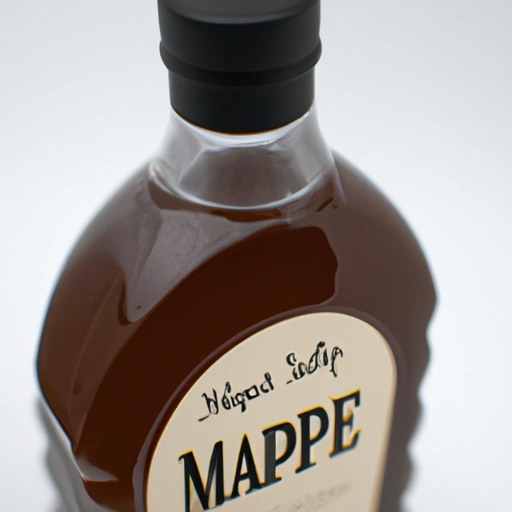Maple Syrup
Description

Maple syrup is a natural sweetener obtained from the xylem sap of various species of maple trees. Predominantly found in the Northeastern United States and Canada, this syrup is harvested during the early spring months. Maple syrup is known for its distinctive flavor, which adds a touch of sweetness to a wide variety of dishes. When substituting for regular sugar, use a 3/4 cup (180 ml/6 fl oz) of maple syrup for every 1 cup (200g/7 oz) of granulated sugar, and reduce the amount of liquid in the recipe by about 3 tablespoons (45 ml/1.5 fl oz).
Common uses
Maple syrup is commonly used as a topping for pancakes, waffles, and French toast. It's also a sweet addition to oatmeal, yogurt, and various baked goods. The syrup serves as a key ingredient in marinades and glazes for meats like pork and chicken, and in salad dressings and sauces.
Nutritional value
Calories
A single tablespoon (15 ml/0.5 fl oz) of maple syrup contains about 52 calories.
Protein
Maple syrup contains a negligible amount of protein, less than 0.1 grams per tablespoon (15 ml/0.5 fl oz).
Fat
Maple syrup is virtually fat-free, with a mere trace amount present.
Carbohydrates
Carbohydrates are the primary macronutrient in maple syrup, with about 13.4 grams per tablespoon (15 ml/0.5 fl oz), primarily in the form of sucrose.
Vitamins
While not a significant source of vitamins, maple syrup does contain small amounts of riboflavin and niacin.
Minerals
Maple syrup is a good source of various minerals, including calcium, potassium, iron, zinc, and manganese.
Health benefits
Maple syrup contains antioxidants that may help reduce oxidative stress. Its lower glycemic index compared to refined sugar makes it a potentially better option for maintaining blood sugar levels. However, it should still be consumed in moderation.
Potential risks
As with all sugary foods, excessive consumption of maple syrup can lead to health issues such as tooth decay, weight gain, and elevated blood sugar levels. Those with diabetes or other sugar-related health concerns should use it sparingly.
Common recipes
Maple syrup is a versatile ingredient in recipes for baked goods like pies, cakes, and cookies, as well as breakfast items such as granola and muffins. It's also used in homemade ice cream and desserts.
Cooking methods
Maple syrup can be used as a direct sweetener in both hot and cold dishes, or it may be caramelized to enhance its flavor. It's also a common ingredient in reductions and can be infused into various culinary concoctions.
Pairing with other ingredients
Maple syrup pairs well with spices like cinnamon, nutmeg, and vanilla. In savory dishes, it complements flavors like mustard, ginger, and balsamic vinegar. It also works nicely with nuts and autumnal fruits like apples and pears.
Summary
Maple syrup is a delightful natural sweetener that has been enjoyed for centuries in North America. With its rich history and diverse uses in both sweet and savory dishes, it's a valuable ingredient in kitchens around the world. Its unique taste and nutritional profile offer a range of culinary opportunities while providing some health benefits. However, it should be used thoughtfully due to its sugar content and potential health risks. From breakfast tables to gourmet recipes, maple syrup continues to be a cherished component of many culinary traditions.